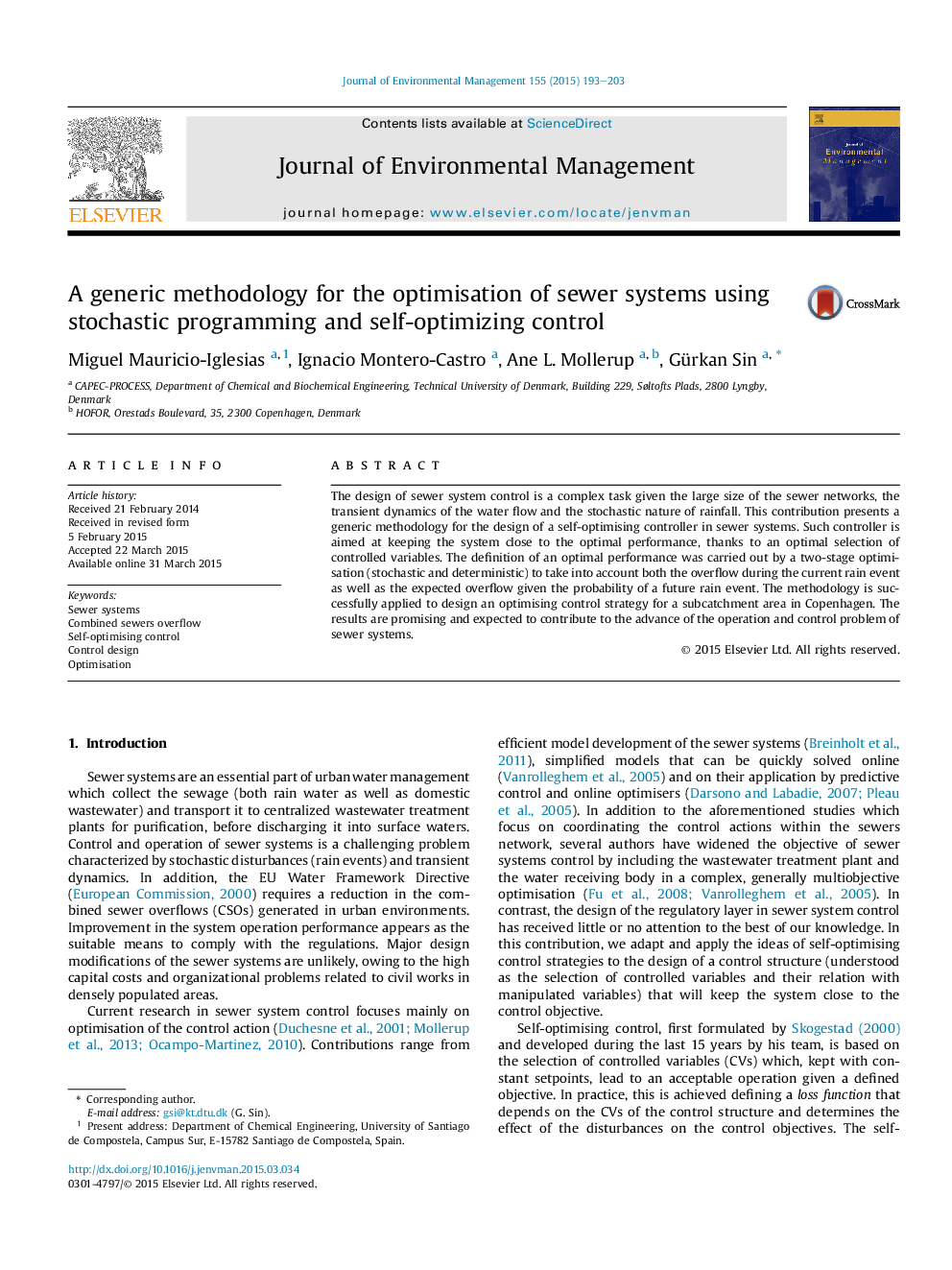| Article ID | Journal | Published Year | Pages | File Type |
|---|---|---|---|---|
| 1055613 | Journal of Environmental Management | 2015 | 11 Pages |
•A novel methodology is presented for control design in sewer systems.•A two stage optimisation is used to account for the stochastic nature of rain events.•Self optimising control ideas are applied in the selection of controlled variables.•The methodology was demonstrated by a case-study in Copenhagen.
The design of sewer system control is a complex task given the large size of the sewer networks, the transient dynamics of the water flow and the stochastic nature of rainfall. This contribution presents a generic methodology for the design of a self-optimising controller in sewer systems. Such controller is aimed at keeping the system close to the optimal performance, thanks to an optimal selection of controlled variables. The definition of an optimal performance was carried out by a two-stage optimisation (stochastic and deterministic) to take into account both the overflow during the current rain event as well as the expected overflow given the probability of a future rain event. The methodology is successfully applied to design an optimising control strategy for a subcatchment area in Copenhagen. The results are promising and expected to contribute to the advance of the operation and control problem of sewer systems.
